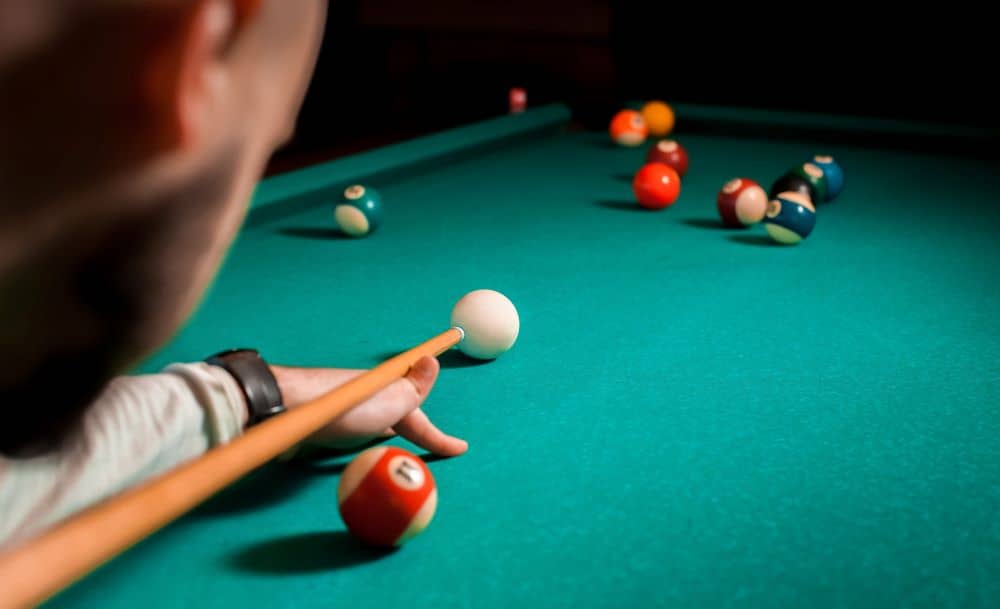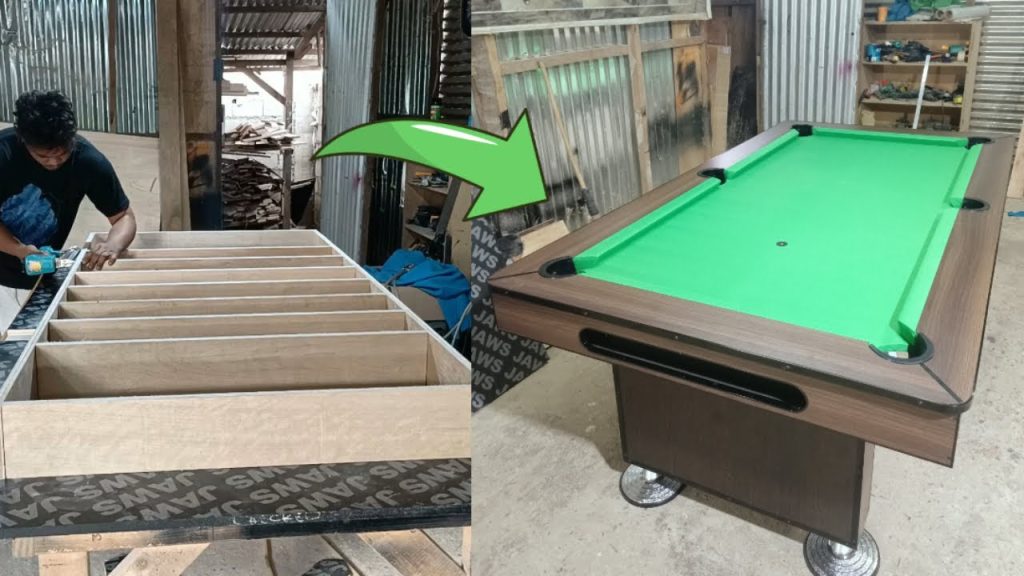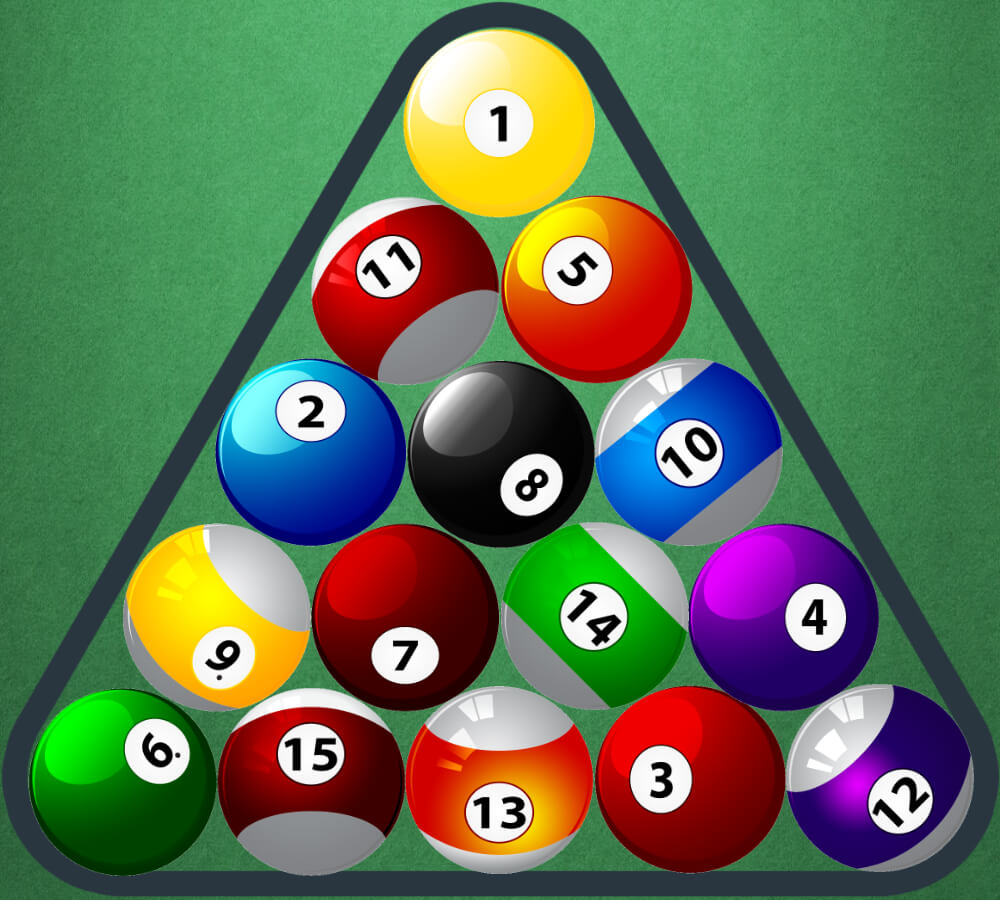Billiards is a classic game that requires skill and precision. Learning to play can be both fun and challenging.
Billiards, often known as pool, is a game enjoyed by many worldwide. It involves using a cue stick to strike balls on a table, aiming to pocket them in the holes. Whether you are a beginner or looking to improve, understanding the basics is key.
In this guide, we will cover the essential steps to get you started. From setting up the table to making that perfect shot, you’ll find everything you need here. Ready to learn and have some fun? Let’s dive into the fascinating world of billiards!
Introduction To Billiards
Billiards is a classic game played worldwide. It involves skill, precision, and strategy. Whether you are new or experienced, billiards is enjoyable for all.
Brief History
The origins of billiards date back to the 15th century. It evolved from lawn games and was first played in France. Initially, people played it on tables with green cloth, representing grass.
Over time, the game spread across Europe and the world. By the 19th century, billiards had become a popular pastime in many countries. Clubs and halls dedicated to the game emerged everywhere.
| Period | Development |
|---|---|
| 15th Century | Originated in France |
| 19th Century | Gained global popularity |
Types Of Billiards Games
There are several types of billiards games. Each has unique rules and styles. Here are a few popular ones:
- Carom Billiards: Played on a table without pockets. The goal is to hit the balls to make them bounce off the cushions.
- Pool: The most common type. Played on a table with six pockets. Variants include 8-ball and 9-ball.
- Snooker: Played on a larger table with smaller balls. The game requires players to pot balls in a specific sequence.
Each game type offers a unique challenge. Learning the different types can enhance your enjoyment of billiards.

Credit: www.wikihow.com
Essential Equipment
Billiards is a game of skill and precision. To play well, you need the right equipment. The essential equipment includes cue sticks, billiard balls, a billiard table, and chalk.
Cue Sticks
The cue stick is the most important piece of equipment in billiards. It is used to strike the billiard balls. Cue sticks come in different lengths and weights. Most players prefer a stick around 57 inches long and weighing 18-21 ounces. The cue tip should be well-maintained for accurate shots. Some players use a break cue, which is heavier and used for the opening shot.
Billiard Balls
Billiard balls are made of plastic or resin. The standard set includes 15 numbered balls and a cue ball. The balls are divided into solid and striped categories. Each ball is precisely measured for consistent play. The cue ball is usually white and slightly larger. The balls should be clean for smooth rolling on the table.
Billiard Table
The billiard table is where the game is played. It has a flat surface covered with felt. The standard table size is 9 feet by 4.5 feet, but smaller tables are also available. The table has six pockets, one at each corner and one in the middle of each long side. The surface must be level for fair play. The cushions around the edges help the balls bounce accurately.
Chalk
Chalk is applied to the cue tip before each shot. It helps increase friction between the cue tip and the ball. This gives better control over the shot. Chalk is available in various colors, but blue is most common. Regular chalking prevents the cue tip from slipping off the ball.
Basic Rules
Playing billiards can be a fun and engaging activity. Understanding the basic rules is essential for enjoying the game. This section will cover the object of the game and the scoring system.
Object Of The Game
The primary goal in billiards is to score points by pocketing balls. Players take turns to hit the cue ball, aiming to sink other balls into the pockets. The game continues until all balls are pocketed or a player reaches a predetermined score.
Scoring System
Different billiards games have unique scoring systems. Here’s a simple table to explain how points are scored in common billiards games:
| Game Type | Point System |
|---|---|
| 8-Ball | Player scores by pocketing their group (solids or stripes) and then the 8-ball. |
| 9-Ball | Points are scored by pocketing the balls in numerical order. |
| Straight Pool | Players score by pocketing any ball on the table. Each ball is worth one point. |
Here’s a brief overview of the key rules:
- Each player must hit the cue ball with the cue stick.
- The cue ball must make contact with the target ball first.
- Players lose their turn if they fail to hit any ball.
- Players score points by pocketing balls according to the game’s rules.
Remember, practice makes perfect. Keep playing to improve your skills and understanding of these rules. Enjoy the game!
Setting Up The Table
Setting up the table involves placing the balls in a triangular rack. The cue ball should be positioned at the opposite end of the table. Ensure the table surface is clean and level for a fair game.
Setting up the billiards table is crucial for a good game. A well-prepared table ensures fair play and smooth action. Here’s how to set up your table perfectly.Rack The Balls
First, gather all 15 balls and the triangle rack. Place the rack at the foot of the table. Make sure the 8-ball is in the center of the rack. The two corner balls should be a solid and a stripe. Arrange the other balls randomly. Push the rack forward until the balls touch the foot spot. Remove the rack gently to keep the balls in position.Determine The Break
Decide who will break the rack. Usually, players flip a coin or lag for the break. In lagging, players shoot a ball to the far end and back. The closest ball to the near rail wins the break. The winner of the break gets the first shot. Place the cue ball behind the head string. Aim for a solid hit to scatter the balls effectively. “`Fundamental Techniques
The game of billiards is both fascinating and challenging. Mastering the fundamental techniques will significantly improve your game. Let’s dive into the essentials that every billiards player must know.
Stance And Grip
Your stance in billiards plays a crucial role. Stand with your feet shoulder-width apart. Position your front foot forward and your back foot at a 45-degree angle. This stance provides stability and balance.
Grip the cue lightly. Your grip should be firm but not tight. Hold the cue in your dominant hand. Place the other hand on the table for support. This creates a solid base for your shots.
Aiming And Striking
Align your shot carefully. Focus on the target ball and the desired pocket. Imagine a line connecting the cue ball to the target ball.
When striking, use a smooth and controlled motion. Avoid jerky movements. Aim for the center of the cue ball. The center hit ensures better control and accuracy.
Follow through after striking. This means your cue should continue moving after contact with the ball. It helps in maintaining direction and force.
Practice these techniques regularly. Consistency is key in billiards. The more you practice, the better you will get.
Common Shots
Billiards is a fascinating game that requires skill, precision, and strategy. A key aspect of mastering the game is understanding and executing common shots. These shots form the foundation of your gameplay and can significantly improve your performance. Let’s explore three important shots: Break Shot, Bank Shot, and Combination Shot.
Break Shot
The Break Shot is the opening shot of the game. It’s crucial as it sets the stage for the rest of the match. To perform a successful break shot:
- Place the cue ball behind the head string.
- Aim at the apex ball of the triangle rack.
- Use a firm, controlled stroke to hit the cue ball.
The goal is to scatter the balls across the table, creating opportunities for subsequent shots.
Bank Shot
The Bank Shot involves hitting the cue ball so that the object ball rebounds off one or more cushions before falling into a pocket. To execute a bank shot:
- Identify the target pocket and the object ball.
- Calculate the angle of rebound.
- Strike the cue ball with the right amount of force.
This shot is useful for bypassing obstacles and positioning the cue ball.
Combination Shot
A Combination Shot is when you hit one ball with the cue ball, which then hits another ball into a pocket. This shot requires careful planning:
- Identify the balls involved in the combination.
- Determine the precise contact points.
- Use a controlled stroke to strike the cue ball.
Combination shots are excellent for complex situations, offering a strategic advantage.
Game Strategies
To excel in billiards, mastering game strategies is essential. Players must understand both defensive and offensive plays. Additionally, cue ball control is crucial for advanced gameplay. Let’s dive into these strategies.
Defensive Play
Defensive play focuses on preventing your opponent from making easy shots. You aim to leave the cue ball in difficult positions. This way, your opponent struggles to score.
- Safety Shots: These shots leave the cue ball in a position where the opponent has a tough shot.
- Snookering: This involves hiding the cue ball behind other balls, making it hard for the opponent to hit their target ball.
- Bank Shots: These shots bounce off the cushion. They are used to position the cue ball strategically.
Offensive Play
Offensive play aims to score points and win the game. You focus on making accurate shots and setting up for the next shot.
- Straight Shots: Aim directly at the target ball for a straightforward score.
- Combination Shots: Hit one ball to drive another into the pocket.
- Break Shots: These shots are used at the start of the game to scatter the balls.
Cue Ball Control
Cue ball control is vital for both offensive and defensive plays. Proper control ensures precise shots and strategic positioning.
Here are some tips for controlling the cue ball:
| Technique | Description |
|---|---|
| Top Spin | Hit the top of the cue ball to make it roll forward. |
| Back Spin | Strike the bottom to make it roll backward after hitting the target ball. |
| Side Spin | Hit the sides to alter the cue ball’s path. |
Practice these techniques regularly. They are key to becoming a skilled billiards player.
Etiquette And Sportsmanship
Billiards is not just about skill and technique. It’s also about etiquette and sportsmanship. These elements ensure a pleasant experience for all players. Knowing the basic rules of behavior helps maintain a friendly and respectful atmosphere. Let’s explore some essential points.
Table Manners
Good table manners are crucial in billiards. Always wait for your turn. Avoid distracting your opponent. Keep quiet while others are playing. Never touch the table or balls when it’s not your turn. Ensure your cue doesn’t hit other players or the table. These small actions show respect and keep the game smooth.
Respecting Opponents
Respecting your opponents is vital in billiards. Congratulate them on good shots. Avoid celebrating excessively when you score. Stay calm and composed, even if the game isn’t going your way. Shake hands before and after the game. These gestures foster goodwill and make the game enjoyable for everyone.
Practicing Tips
Practicing billiards can be fun and rewarding. To improve your skills, you need to practice regularly. Here are some tips to help you on your journey to becoming better at billiards.
Solo Drills
Practicing alone helps you focus on specific skills. Set up different shots and try to make them. Repeat the process until you feel confident. Work on your stance and cue grip. This will help you control the cue ball better.
Try practicing straight shots first. Once you master them, move to more complex shots. Practice your break shot. This is the first shot in the game and sets the tone for the rest of the game. Practicing it will give you an advantage.
Playing With Others
Playing with friends or other players can be very helpful. You can learn different techniques and strategies. Watch how others play and learn from them. Ask for feedback on your shots. This can help you identify areas where you need improvement.
Playing with others also adds a competitive element. It pushes you to perform better. You can also play different game variations to keep practice sessions interesting. This keeps the learning process fun and engaging.

Credit: www.wikihow.com
Advanced Techniques
Mastering the game of billiards involves more than just hitting balls into pockets. Advanced techniques can elevate your game, making it more enjoyable and competitive. In this section, we will explore three advanced techniques: spin shots, jump shots, and masse shots. Each technique adds a unique element to your play style, helping you outmaneuver your opponent.
Spin Shots
Spin shots, also known as English, involve hitting the cue ball off-center. This creates a spin, affecting the ball’s trajectory and interaction with other balls. Here are some essential tips for executing spin shots:
- Position your cue tip to the left or right of the cue ball’s center.
- Use a smooth, controlled stroke to maintain accuracy.
- Practice different spin intensities to see how they affect the ball’s movement.
Jump Shots
Jump shots are used to bypass obstacles on the table. This technique involves hitting the cue ball in a way that makes it jump over another ball. Follow these steps to perform a jump shot:
- Hold your cue at a steep angle, around 45 degrees.
- Strike the cue ball at its top, with a quick, downward motion.
- Ensure your cue tip is chalked to prevent slipping.
Masse Shots
Masse shots involve applying extreme spin to the cue ball, causing it to curve. This is useful for navigating around obstacles. To execute a masse shot:
- Hold the cue almost vertically.
- Strike the cue ball with a quick, downward motion.
- Apply spin to the left or right, depending on the desired curve.
Practice these advanced techniques to enhance your billiards skills. Remember, consistency and control are key.

Credit: quedos.com.au
Frequently Asked Questions
What Are The Basic Rules Of Billiards?
Billiards involves hitting balls with a cue stick. The objective is to score points by pocketing balls in a set order. Each game type, like 8-ball or 9-ball, has specific rules. Always follow house rules for variations.
How Do You Hold A Billiards Cue?
Hold the cue with your dominant hand. Your other hand forms a bridge on the table. Keep it steady. Aim with your dominant hand and maintain a firm grip.
What Is The Best Way To Aim In Billiards?
To aim, align your cue with the target ball. Visualize the path to the pocket. Use a consistent, smooth stroke. Practice to improve accuracy.
How Can Beginners Improve Their Billiards Skills?
Beginners should practice regularly. Focus on developing a consistent stroke. Learn basic strategies and positioning. Watching experienced players can provide valuable insights.
Conclusion
Playing billiards can be fun and rewarding. Practice regularly to improve your skills. Remember the basic rules and techniques. Stay focused during your games. Enjoy the moments with friends and family. Billiards offers both challenge and relaxation. Keep learning and exploring new strategies.
Soon, you will see your progress. Enjoy every shot and have fun!


